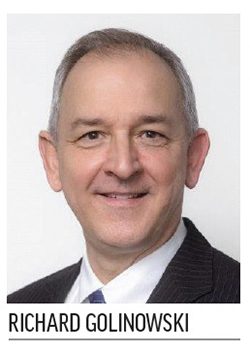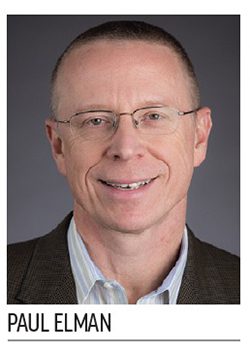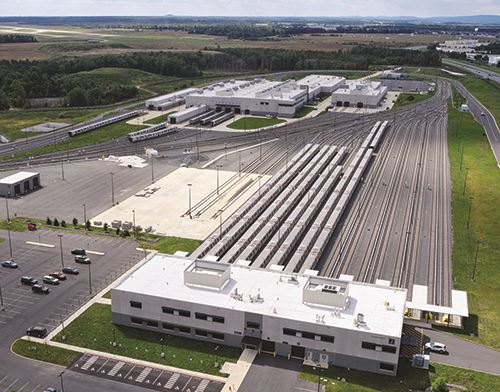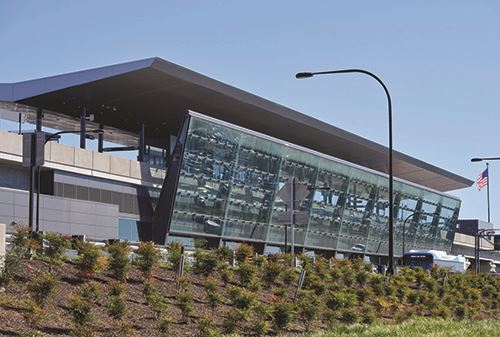Nearly 60 years and billions of dollars in the making, the Silver Line Extension opened Nov. 15, 2022, connecting customers to six new stations, including one at Washington D.C.’s Dulles International Airport (IAD). The new 11.4 miles of Metrorail track expanded the Washington Metropolitan Area Transit Authority (WMATA) system to provide service between Reston and eastern Loudoun County, both in Virginia.
Nearly 60 years and billions of dollars in the making, the Silver Line Extension opened Nov. 15, 2022, connecting customers to six new stations, including one at Washington D.C.’s Dulles International Airport (IAD). The new 11.4 miles of Metrorail track expanded the Washington Metropolitan Area Transit Authority (WMATA) system to provide service between Reston and eastern Loudoun County, both in Virginia. The project also includes a modern rail yard and maintenance facility (the area’s largest) that sits on 96 acres of airport property. Overall, it is one of the largest capital construction projects in the U.S.
 To be sure, the $3.2 billion Silver Line Extension will provide easier access for IAD employees and passengers, especially those who live east of the Potomac River. But it also will provide a shot of adrenaline to fuel the airport’s growth, says Richard Golinowski, vice president and airport manager at IAD. “Part of our master plan is to expand our facilities. By 2045, we anticipate being double the size of what we are today as far as passengers and facilities, and the Silver Line plays right into that growth plan.”
To be sure, the $3.2 billion Silver Line Extension will provide easier access for IAD employees and passengers, especially those who live east of the Potomac River. But it also will provide a shot of adrenaline to fuel the airport’s growth, says Richard Golinowski, vice president and airport manager at IAD. “Part of our master plan is to expand our facilities. By 2045, we anticipate being double the size of what we are today as far as passengers and facilities, and the Silver Line plays right into that growth plan.”
Like so many other airports, IAD is still feeling the effects of COVID, but Golinowski notes that passenger traffic made a strong recovery in 2022 with activity at 85% of 2019. “We believe that in 2023, we’ll be at or above our 2019 numbers,” he adds. “Then, we expect a steady 2% to 3% growth every year after that.”
|
Project: Metrorail Extension Location: Washington Dulles Intl Airport Scope: Extending Silver Line from Reston, VA, to Dulles Airport & and Loudoun County, VA Cost: $3.2 billion Funding: Variety of state, county & federal sources (FTA & USDOT Build America Bureau), including tolls, commercial tax districts, federal grants & loans Design-Build: Commenced in 2015 Service Began: Nov. 2022 Expected Ridership: 23,000 passenger trips/day Top Speed: 75 mph Capacity: 130 seats/2-car pair Rail Line Length: 11.4 miles Stations: 6 Aerial Guideway: 13,550 ft. long System Operator: Washington Metro Area Transit Authority System Provider: Mass Electric Corp. supported by ARINC (Communications), Powell (Traction Power), Hitachi (ATC) System Consultant: Lea & Elliot Train Cars: Kawasaski 7000 series Program Consultant: Jacobs Engineering Group (prime) with Kimley-Horn, Lea+Elliott, MPB & other subconsultants Design-Build Contractor: Capital Rail Constructors (GV – Clark Construction Group LLC; Kiewit Infrastructure South Co.) Construction Manager: Metropolitan Washington Airports Authority Architect for Dulles Station: Skidmore, Owings & Merrill Facilities Designer: Parsons Transportation Group, Dewberry Civil Engineer/Design: Parsons Transportation Group, Dewberry Electrical Subcontractor: Ennis |
Additional air carriers and routes will be key to that growth. Golinowski reports that IAD already has seen increased interest from international carriers—interest that is on a fast track because of the rail connection.
“We anticipate that we’ll start to see some of those carriers actually sign contracts with us for service at Dulles Airport in 2023,” he predicts. “And, over the longer term, five to 10 years, we’ll see even more.”
He adds that IAD’s largest carrier, United Airlines, was very active in the planning of the Silver Line project and how the extension could impact its customers. That includes adding new routes within the United system based on traffic coming through the Silver Line.
The rail connection is a boon for airport employees, too.
Golinowski notes that IAD has a lot of employees who live close to Metro system stations, and they’re finding it very easy to use the Silver Line to get to work.
Engineering a Solution
Although the journey to IAD just got easier, the journey to extending the Silver Line was difficult. It took more than a handful of decades, billions of dollars and scores of people.
One person who has been there since nearly the start is Paul Elman, a senior vice president with Kimley-Horn, a firm that provided program management support services for both phases of the Silver Line project.
After serving as deputy director of engineering for the project while with owner agencies Virginia Department of Rail and Public Transportation (DRPT) and Metropolitan Washington Airports Authority (MWAA), Elman joined the Kimley-Horn program management team as manager of all planning, development and environment activities for Phase 2 of the project.
Elman started on the project in 1993 as a consultant while working for the DRPT, where the mission was to promote rail and public transit service and infrastructure projects throughout Virginia. That’s when he became involved in a major study investigating various transit service options for the airport corridor.
In 2000, DRPT with WMATA kicked off the Environmental Impact Statement process, which resulted in the preferred alternative: adding new rail to extend the Metro system. The project then transitioned to MWAA, which was interested in ensuring that rail was built to the airport.
Elman and the management team at DRPT then transitioned to MWAA, and he continued his role as deputy director of engineering for the rail project.
During this time, the state was privatizing the widened Dulles Toll Road, which was the state’s primary revenue source to fund the rail project through toll road revenue. Elman explains that MWAA was concerned there was no guarantee those revenues would stay in the corridor for transportation improvement. So, the Airports Authority presented its own proposal to take over the toll road, and consequently became the project sponsor and a major funding partner for the rail project.

When he decided to go back to private consulting, Elman stayed involved in the rail project as part of Kimley-Horn in a variety of roles supporting MWAA on the project development, design oversight and delivery of both project phases.
Near Derailment
The start of the Silver Line project dates back to 1962, when IAD was originally built, and the median of the access highway serving the airport was reserved for future transit. Groundbreaking for Phase 1 of the project occurred in 2009 and ultimately opened to revenue service in 2014. This phase included design and construction of the 11.7 miles of track that runs from near East Falls Church through Tyson’s Corner to Wiehle Avenue and Reston.
That part of the project was almost derailed due to challenges securing federal funding. DRPT and MWAA applied for Federal Transit Administration (FTA) funding under its New Starts program and eventually secured $900 million to build Phase 1 of the project. “The challenge was that under that program, the Federal Transit Administration does a significant amount of oversight for the grantees,” Elman explains. “They have a lot of requirements on the components that make up the project and the project’s cost, schedule and risks that they weigh in on before they approve the funding.” When the design of Phase 1 ended up being way over the budget to meet FTA’s cost-effectiveness criteria, significant value engineering occurred to reduce costs while maintaining the same functionality and service, he continues.

The entire process required extensive coordination with the funding partners, which not only included FTA, but also the state of Virginia, MWAA and two counties (Fairfax and Loudoun) and most importantly WMATA, which served as the ultimate owner and operator of the extension. Not surprisingly, it was a huge challenge to design a system that met all the stakeholders’ needs and the FTA cost-effectiveness requirements.
“There were times that everybody thought the project was on life support,” Elman recalls. “There were major doubts it was going to get the funding to go forward. It was a very tense time. A lot of political capital was on the line. Kudos to Governor Tim Kaine and the congressional delegation who really had to go to bat for the project to make it a reality.”
Budget Drives Design Changes
For Phase 2, MWAA leaders decided not to pursue funding from the FTA New Starts program because they felt the process and the requirements were too constricting. Instead, they applied for a Transportation Infrastructure Finance and Innovation Act (TIFIA) loan from the U.S. Department of Transportation and ultimately received $1.87 billion in loans—$403 million for Fairfax County and $195 million for Loudoun County combined with the $1.278 billion TIFIA loan to MWAA. But because Phase 2 of the project was so large and received so much TIFIA money, the Transportation Department asked FTA for help with oversight. “Ironically, the Airports Authority ended up with pretty much the exact same level of oversight and requirements they had in Phase 1,” says Elman.
To meet those Phase 1 FTA requirements, the project team set up a working group that met weekly to discuss contractors’ ideas for potential cost reductions. When evaluating various proposals, members considered the immediate cost and schedule implications for construction, but also looked ahead to potential impacts on all stakeholders and operating and maintenance costs for WMATA. “There was a lot of back-and-forth negotiation to try to come to consensus on what project elements could be incorporated in order for us to meet the federal cost effectiveness,” Elman remarks. That brainstorming led to compromise on the amount of aerial structure versus tunnel for the alignment in part of the system.
A similar effort occurred in Phase 2 related to the decision to locate the airport station just outside the terminal rather than inside the terminal building.
The original design was for an underground station at IAD, but cost constraints prompted a change in plans. “Similar to Phase 1, when we got to about the 30% design level, the funding partners essentially said they couldn’t afford that design, based on the funding plan that was worked out,” Elman explains. After more value engineering exercises, the station at the airport was located above ground on an aerial structure directly integrated with an existing pedestrian tunnel that connects the north parking garage to the main terminal. Although the design change added a bit of travel time for Silver Line passengers going to the terminal, it saved an estimated $600 million and allowed the existing funding plan to stay in place. With moving walkways integrated into the climate-controlled pedestrian tunnel, travel time is estimated at about five minutes from the Metro station platform to the airport terminal.
Maintenance and Operation
After the Silver Line extension achieved its operational readiness date in June 2022, WMATA assumed control from MWAA. The new infrastructure represents just a fraction of Metrorail’s 97 stations and 128 miles of track—all of which will be easier to maintain with the completion of the new Dulles Rail Yard and Maintenance Facility.
 “The project not only comes with the six stations and 11½ half miles of track, but it also comes with a rail yard, that is as functional, if not more functional, than any other yard WMATA has in their system, providing WMATA with another great capability to maintain their system and their cars,” says Andrew Hascall, vice president of the Dulles Corridor Metrorail project for MWAA.
“The project not only comes with the six stations and 11½ half miles of track, but it also comes with a rail yard, that is as functional, if not more functional, than any other yard WMATA has in their system, providing WMATA with another great capability to maintain their system and their cars,” says Andrew Hascall, vice president of the Dulles Corridor Metrorail project for MWAA.
The facility is the Metrorail’s largest rail yard, employing 450 people and housing 176 cars as well as service equipment. It includes supporting infrastructure for the maintenance, inspection, servicing and storage of railcars, including about 9.5 miles of track and 47 switches to control train movement within the yard. The yard can store 22 eight-car trains and has 36 car hoists, which allow workers to service nine pairs of cars simultaneously.
Thanks to energy-efficient lighting, non-toxic building materials, best practices in ventilation and stormwater control measures, three of the buildings at the rail yard received LEED Silver certification in 2020.
All Aboard
Relationships were the engine driving this massive infrastructure project.
“I’ve spent the majority of my adult life in construction,” Hascall says, “and construction projects are built on relationships. Strong relationships with our partner contractors, with WMATA and with the local municipalities are what get projects across the finish line. While I may have been in charge of building it and getting it finished, there are a lot of people who contributed along the way.”
He adds that sometimes in the final mile of a project this long, all the vision and planning that went into getting it right get lost. For example, he cites the importance of the foresight planners showed by including a right of way for rail access when building the highway from Washington, D.C., to IAD. “I think a ton of credit goes to those people who planned it and got it to the start line,” says Hascall.
From contractors to community members to Congress members, everyone involved in the project had tunnel vision toward success, he adds.

“I think that comes from having a good vision of the goal: to deliver a safe and efficient rail operating system to the Northern Virginia region. Everyone just kept that in mind so that no matter what problem was in front of us, we’re all trying to do this thing that matters.”
Elman agrees that coordination and collaboration were crucial. “These large infrastructure projects take a significant amount of time and effort,” he says. “I don’t think the general public quite appreciates what goes into the magnitude of these endeavors—the number of people, the number of stakeholders who have to weigh in on all the decisions that need to be made. It’s not just on the location or design of facilities, but the way they operate and the way they interface with the broader communities.”
Although the process took decades, Golinowski says the significance of the project helped keep people on track. “Everybody came to the table, and they came with solutions,” he says. “It was really refreshing to see that, because a lot of times, on these big projects, people have their backs up against the wall and they refuse to budge. But that never really happened. Everybody wanted to get it done. For 60 years we’ve been talking about this, and I think people realized that no matter what, we had to finish it.”
The first train pulled into the Metro station at IAD to great fanfare on Nov. 15. The opening came just in time for the impending surge of Thanksgiving travelers, and the new facility has been bustling ever since. During the Silver Line’s first three weeks of operation, the airport station was the most used in the entire system—accounting for more than a third of riders. With that kind of traffic, it may be just the ticket for fast-track growth at IAD.




